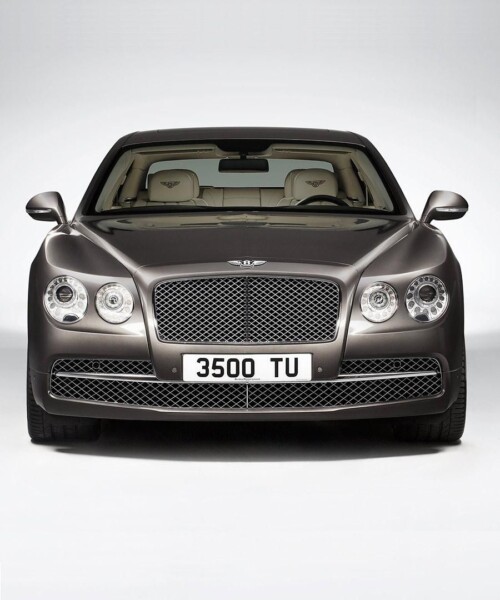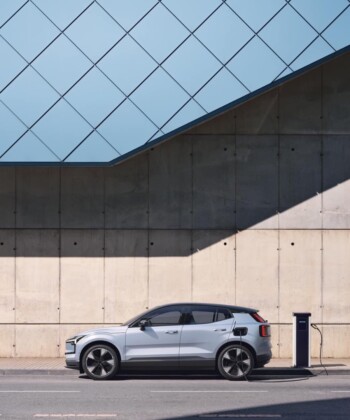It may take a village to raise a child, but it takes a small English town to make a car. At least in the case of the new Bentley Flying Spur ($200,500), which debuted this March at the Geneva Auto Show. In Bentley’s case, the town in question is Crewe, and it has been the home to the Bentley factory for the last 70 years. So though the 2013 Flying Spur represents a fairly robust departure from previous models, the skills required to make it are time-tested and town-approved.
The car itself is massive; it comes in at just over 17 feet long and over 1,650 lbs and, in its giantness, it harkens back to Bentley’s history as a carriage manufacturer. Even the name, “Flying Spur,” refers to the crest of Johnstone family, who owned H.J. Mulliner, a carriage maker that would become modern-day Bentley.
Within the company, Flying Spur has become to Bentley what grand cru is to vintners, an appellation employed to indicate superior quality. The last time there was a Flying Spur, it was in 1994 — a very good year for Bentley — and still only 134 units were produced.
One of the things I’ve always liked about Bentley is that the company subscribes to the atomic model of quality. That is to say, even a behemoth of a vehicle, such as this is, is made up of thousands, if not millions, of small decisions which privilege quality of the easy way.
The work of engineers is mostly felt in the performance, measured by metrics and hidden under the good. The engine, for instance, is a 6.0-litre, twin turbocharged, 48-valve, which delivers 625 PS (616 bhp) at 6,000 rev/min and 800 Nm (580 lb ft) of torque from only 2000 rev/m. But for those of us, to whom that is all just a bunch letters and numbers combined at almost random, it’s enough to say the car feels powerful.
Where one really comes into contact with the craft is in the interior. It takes 159 man hours to build the Flying Spur from start to finish. The trim — for which at least ten hides are needed — is cut, sewn and built by hand. Actually, by the 24 hands of 12 seamstresses who, between them, have 360 years of experience. That leather alone takes 30 hours. And each car is custom made so the leather can vary. According to Bentley leather master Mark Dawson, a car sent to Japan tends to have be more highly finished leather while Americans tend to get a kick in slight imperfections. “The Japanese want the leather to look like vinyl,” he said, “whereas Americans love when the stretch marks can still be seen, slightly, in the leather.”
Of course, there’s a bunch of screens too in the car, more screens than a Cineplex, more screens than most people have in their home. They control just about everything: the music, navigation, Blue Tooth, temperature in the cabin, temperature of the seats. But the real draw is the wood in which the screens are set. The wood veneer is made exclusively from burled wood. There’s no surprise there. Burled wood a shibboleth for luxury vehicles. But what Bentley does is a painstaking process called “book matching” which results in mirrored burls. It’s really time consuming to explain and even more time consuming to do. Just know it involves hours of staring at swirls of wood.
Few, one imagines, will notice how perfectly the wood panelling on the rear doors are perfectly matched to the panelling on the front doors or that each panel has a line of symmetry. But, that’s the beauty of the Flying Spur, wherein thousands of acts of small beauty form nearly one ton of perfection.









































